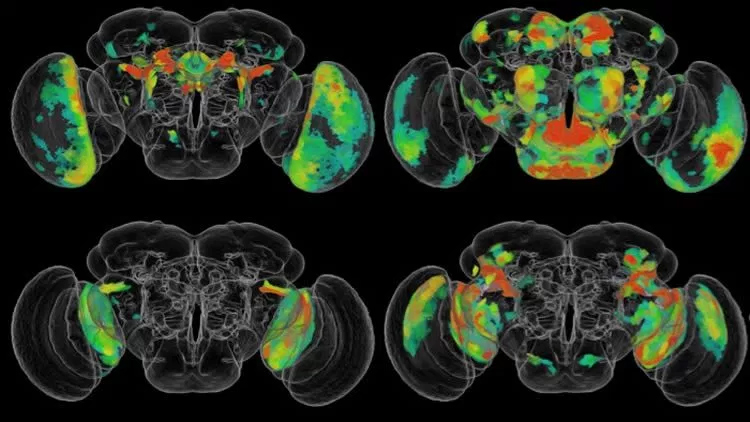AI fly-by: artificial intelligence is mapping the brains of flies

The human brain has something like 21 billion neurons in it. That's why mapping the connections between those neurons – vital for understanding how the brain works – is an intimidating task. But the brain of a fruit fly only has 100,000, making it rather more approachable.
A team of neuroscientists at the Howard Hughes Medical Institute has therefore chosen fruit flies for their first experiments with a machine learning system that has the ability to map those connections. “We wanted to understand what neurons are doing at the cellular level,” said Kristin Branson, who led the team.
Their system crawled through more than 225 days of video footage of more than 400,000 fruit flies, tracking the position and cataloguing the behaviour of every insect. That's a task that would have taken humans about 3,800 years.
Genetically engineered
The researchers already had an anatomical map of the neurons in a fruit fly's brain, but they didn't know what role each group of neurons played in behavior. So, using populations of flies that were genetically engineered to crank up the activity of different neurons, they set about characterising their effects.
For example, one population huddled together when put into a shallow dish. Others acted even more strangely – “Sometimes you’d get flies that would all turn in circles, or all follow one another like they were in a conga line,“ said lab technician Jonathan Hirokawa.
By matching up these behaviors, painstakingly logged by the artificial intelligence, with the data on which neurons were active, the researchers could figure out which neurons were involved in different behaviors.
Eat, fly, mate
Ultimately, it's hoped that the results of the research could be applied to other animals and perhaps even humans, with their billions of neurons. “Flies do all the things that an organism needs to do in the world,” said Alice Robie, lead author on the study describing the results.
Sign up for breaking news, reviews, opinion, top tech deals, and more.
“They have to find food, they have to escape from predators, they have to find a mate, they have to reproduce.”
The full details of the research were published in the journal Cell.
